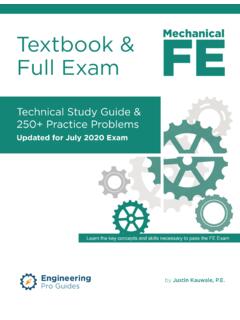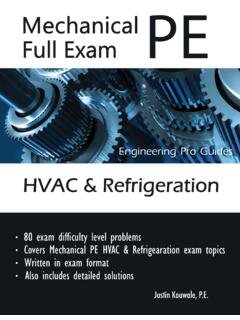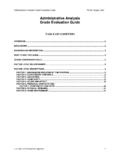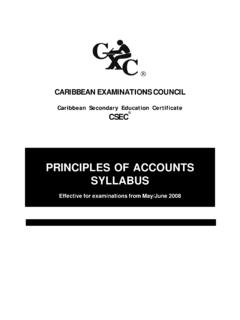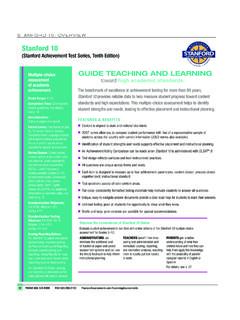Transcription of SOIL AND WATER CONSERVATION
1 A study guide for Farmer Field Schools andCommunity-based study GroupsSOIL AND WATER CONSERVATIONWith a Focus on WATER Harvestingand Soil Moisture RetentionA study guide for Farmer Field Schools andCommunity-based study GroupsSOIL AND WATER CONSERVATIONWith a Focus on WATER Harvestingand Soil Moisture RetentionCompiled by:Deborah DuveskogContributors:Mbeere Farmer Field SchoolsDaniel NyagakaBenjamin MweriMwamzali ShiribwaDr. Pascal KaumbuthoiiPublished by The farm Level Applied Research Methods for east and Southern AfricaGCP/RAF/334/SWEC opyright: FARMESA, Harare, Zimbabwe 2003 Version , March 20031 Design and layout: Deborah DuveskogPrinting: Fotoform : Raymond Musumba WamukoyaYou are free to reproduce and distribute widely any part of this, provided that youacknowledge the source and the purpose is not for profit or from: Ministry of Agriculture and Rural Development, KenyaDirectors OfficeKilimo Hse. Cathedral Box 30028 Nairobi, KenyaTel: +254-2-725723 FAO Representation, KenyaUtumishi Co-op.
2 HseMamlaka Rd. Off Nyerere Box 30470 Nairobi, KenyaTel: +254-2-725069 / 725359E-mail: 1 Version is currently subject to internal review by FAO. A reviewed version will be published in designations employed and the presentation of material in this publication do not imply theexpression of any opinion whatsoever on the part of the Food and Agriculture Organization ofthe United Nations concerning the legal status of any country, territory, city or area of itsauthority, or concerning the delimitation of its frontier and Sub-Sahara Africa, majority of the population derives its livelihood from agriculture accounts for 75% of agricultural production of which the majorityconstitutes of rainfed farming. Drought is Africa s principal form of natural disaster whichoften it affects rainfed agriculture dramatically. The impact of population growth in ruralareas is pushing communities into unsustainable farming practices such as burning andrazing of tropical forests in order to plant crops, planting in steep slopes, moving intofragile marginal eco-system, over cropping and over grazing and subsequent depletion of fragile arable land and over-utilization of ground WATER resources.
3 It has been estimatedthat a sixth of the world s land area, nearly 2 billion hectares, is now degraded as a resultof overgrazing and poor farming practices. WATER resources for agricultural purposes aregetting scarce, and there are hardly any land reserves to be brought into production towiden the agricultural base. By 2025, close to three billion people in 48 countries will beaffected by critical WATER shortage for all or part of the rate of at least percent per year are necessary if typical Eastern andSouthern African countries are to reduce poverty at an acceptable rate and the agriculturalsector is often expected to pave the way for this broad based economic growth. Accordingto FAO, world food production will have to double in order to provide food security for people expected by 2035. Productivity increase at all levels is crucial to achieve thistarget. In addition to improving soil fertility, WATER harvesting, enhancing the soil-waterretention capacity and reducing soil erosion are measures that could significantly improveagricultural productivity in rainfed marginal environments.
4 Thus, soil and waterconservation practices are becoming increasingly important in the arid and semi-aridfarming systems of the and site specific technologies are needed to address poverty and foodinsecurity. Both available scientific knowledge and indigenous knowledge by communitiesshould effectively contribute to this process and farmers should actively participate in thedesign, implementation, and evaluation as well as in the dissemination of Field Schools (FFSs), a non-formal adult education approach is emerging as analternative to the Training and Visit system of technology dissemination. In addition FFSseffectively contribute to capacity building and empowerment of the farming study guide embraces the FFS concepts and applications in addressing soil andwater management issues; and effectively captures the experiences of farmers in Kenyaand elsewhere.
5 It further, offers an opportunity for farmers to experiment and learn in theirown primary target groups for this study guide are extension staff and participating farmersin the FFSs. Other farmer groups and non-governmental organisations working withfarmers to address soil and WATER CONSERVATION related issues could also use the study guide can effectively contribute to emerging participatory research andextension approaches, while addressing one of the critical constraints in the smallholderproduction systems in the region; limited WATER resources. We also request the users ofthis guide to provide feedback to the authors so that the material can be revised would like to congratulate the authors for their efforts and the Swedish InternationalDevelopment Co-operation Agency (Sida) for their financial support in making this guide ANANDAJAYASEKERAMDr.
6 J. K. WANJAMATeam Leader and Methods SpecialistDirector of Agriculture,FARMESAM inistry of Agriculture and Rural DevelopmentvPREFACEA large proportion of the population in Sub-Saharan Africa earn their livelihoods fromrainfed agriculture and thereby depend directly on rainfall and agricultural productivity fortheir survival. Poor yields in combination with a large population growth has often led tofood shortages and in order to improve rural livelihood there is a big need for improvedfarming practices among small-holder conditions of the semi-arid regions put high demands on farm WATER is the most limiting factor for agricultural production and low annual rainfall is oftenstated as a major reason for food insecurity. Increasing WATER availability for crops can bedone by irrigation. However, due to lack of available WATER resources this is often not anoption in the African drylands.
7 A more feasible option is to utilise the limited amount ofrainfall with higher efficiency. By increasing soil WATER content, supply and retention, cropyields can be improved significantly, and successful crop production can be made possibleeven in areas that are producing poorly under existing conditions. In dry regions withoutsources of WATER for irrigation and where rainfall is insufficient to cover the WATER demandsof crops, WATER can be harvested in order to increase available WATER resources. Waterharvesting and soil moisture retention are cheap and simple options for increasing soilmoisture, and have successfully been used in dryland farming situation around the farm practices have to suit local ecological and socio- economic conditions. Soiland WATER management practices are highly site specific and technologies that are asuccess in one area might not prove useful in a different context.
8 Therefore it is importantthat farm practices are developed and adapted locally, by farmers. The role of farmers inresearch and extension of agricultural practices needs to be strengthen so that appropriatetechnologies can be developed and disseminated. Resource poor farmers learn best fromother farmers and prefer trying out technologies on a small scale first before adopting it ona larger area. Farmer Field Schools is an approach for farmer-led research and extension,where groups of farmers learn and experiment study guide is intended to assist farmers in learning and experimenting on improvedsoil and WATER management. The target groups for the study guide are, Farmer FieldSchools, village farmer groups and agricultural extension staff. The study guide includes 7chapters. Chapter one explains how to use this study guide for farmer training and on-farm technology development. Chapter two focuses on how to set up and run a FarmerField School.
9 Chapter three gives an overview of WATER harvesting and soil moistureretention approaches. Chapter four is intended as the actual learning material of the studyguide; explaining the basic science of soil and WATER and giving examples of hands-onexperiments that can be carried out among farmer groups. Chapter five gives guidelinesfor how to set up on-farm trials. Chapter six focuses on how to monitor and evaluate on-farm trials. Finally, in chapter seven some examples of season long farm trials are content of this study guide , and experiments included are to a large extent based onexperiences from the FARMESA2 (Farm Level Applied Research Methods for Eastern andSouthern Africa) - funded Farmer Field Schools in Mbeere, Kenya. Some of theexperiments are drawn from experiences of Farmer field Schools outside Kenya, mainlyunder the FARM programme in Asia. The study guide should be considered a draft 2 The Farm Level Applied Research Methods Programme for East and Southern Africa (GCP/RAF/334/SWE; FARMESA) is a regionalprogramme funded by the Swedish International Development Co-operation Agency (SIDA) and executed by Food and AgricultureOrganisation of the United Nations (FAO).
10 Vipublication that will be tested on larger scale under the FAO country program in on the experiences, feed back and lessons learned the study guide will be revisedand a second edition published in 2002. Thus, the users are requested to provide feedback to facilitate this proposed revision. Finally, I would like to express my thanks toMbeere farmer Field School groups, whom are the base for the development of thisstudyguide. I would also like to thank, Daniel Nyagaka, Benjamin Mweri, MwamzaliShiribwa and Dr. Pascal Kaumbutho for valuable contributions to this DUVESKOGN airobi, August TO USE THIS study FARMER FIELD SCHOOL OF WATER HARVESTING AND SOIL MOISTURE RETENTIONAPPROACHES5 Retention ditches7 Contour farming9 WATER harvesting by external catchments9 Contour furrows11 Stone lines12 Grass strips13 Planting pits14 Semi-circular bunds15 Earth basins16 Mulching17 Cover crops18 CONSERVATION tillage194.










